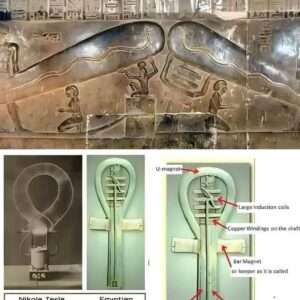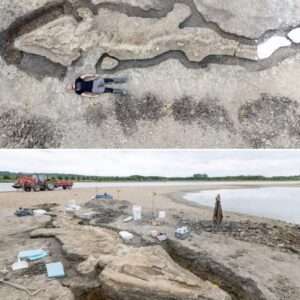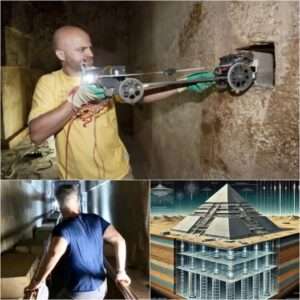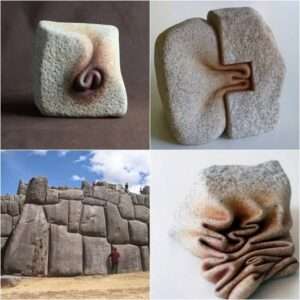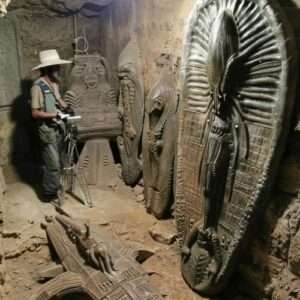In the heart of Egypt’s Valley of the Kings lies a tomb that remained sealed for over 3,000 years, safeguarding a priceless archaeological treasure awaiting discovery. In 1922, the unveiling of a cryptic seal by British archaeologist Howard Carter marked the beginning of a monumental find that would capture the world’s fascination.
The seal, featuring a jackal standing triumphantly over nine captives, symbolized divine protection and hinted at the tomb’s immunity from extensive looting. Behind the sturdy doorway lay the final resting place of Tutankhamun, a young pharaoh of the 18th Dynasty who ruled briefly from around 1334 BC to 1323 BC. Despite his short reign, Tutankhamun’s burial chamber housed an astonishing array of riches that provided a rare glimpse into the opulence and beliefs of ancient Egypt.

Among the treasures unearthed were gilded statues, ceremonial chariots, intricate jewelry, and the iconic golden death mask that has since become synonymous with Tutankhamun. Impressively detailed and masterfully crafted, these artifacts showcased the wealth and artistry of a bygone era. Surprisingly, the tomb’s contents reflected a modesty not typically associated with pharaohs, leading scholars to posit that it may have originally been intended for a lesser noble before being hurriedly repurposed for the young king.
As the world marveled at the wealth within Tutankhamun’s tomb, questions arose about the circumstances surrounding his untimely demise. Was it due to illness, an accident, or perhaps even foul play? The mysterious circumstances of his death, coupled with the simplicity of his burial compared to his royal predecessors, continue to spark debate and intrigue among historians and Egyptologists.
The unbroken seal on Tutankhamun’s tomb stands as a poignant reminder of the enigmas that still lie buried beneath the sands of ancient Egypt. It symbolizes the enduring allure and mysteries of a civilization shrouded in time, waiting to be unveiled and deciphered by those who dare to delve into its secrets.
